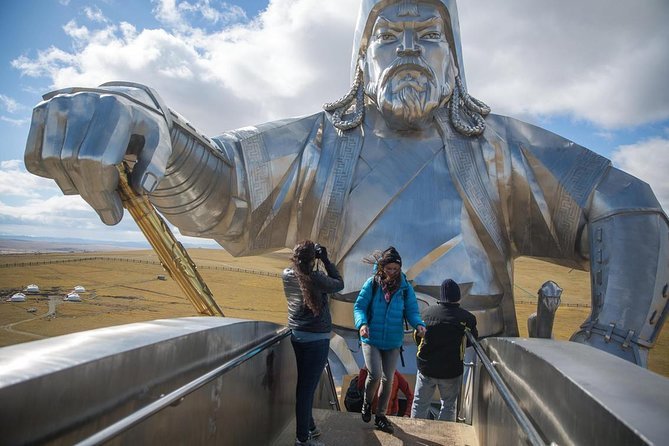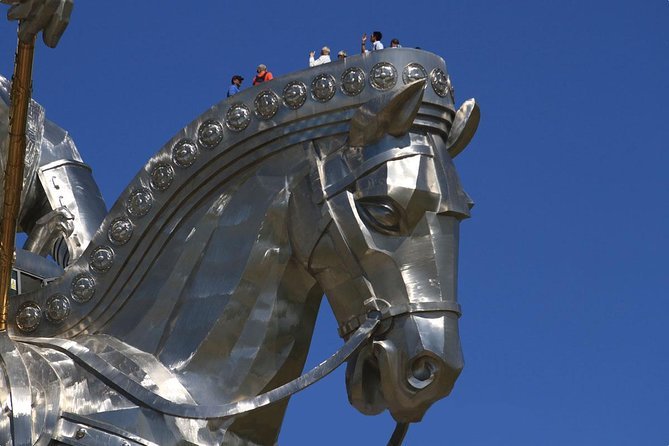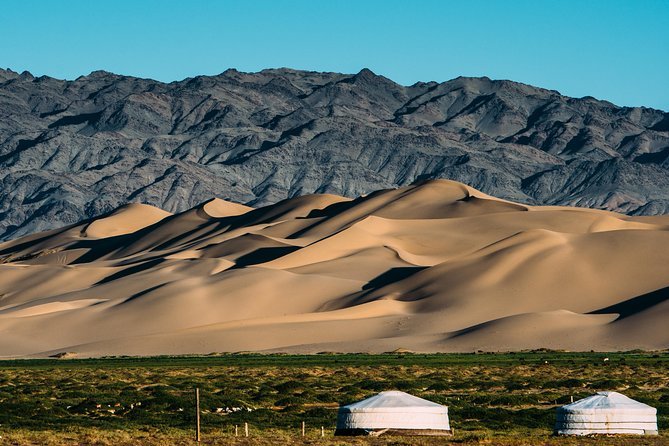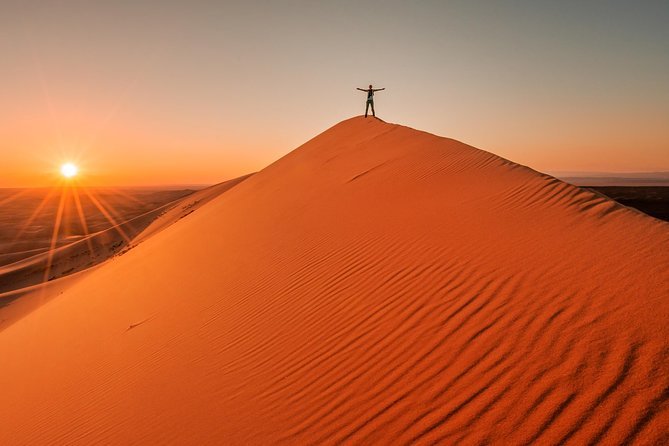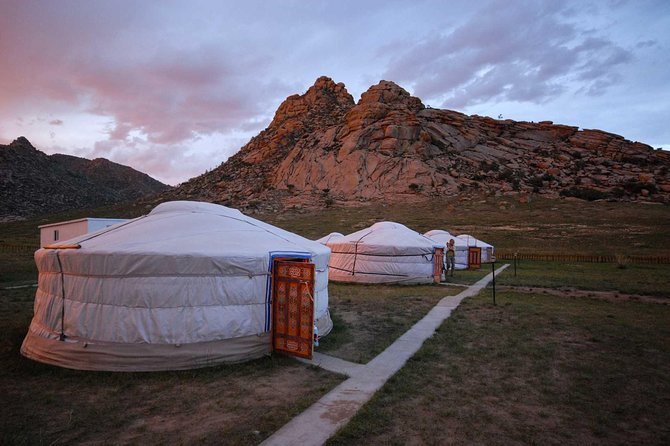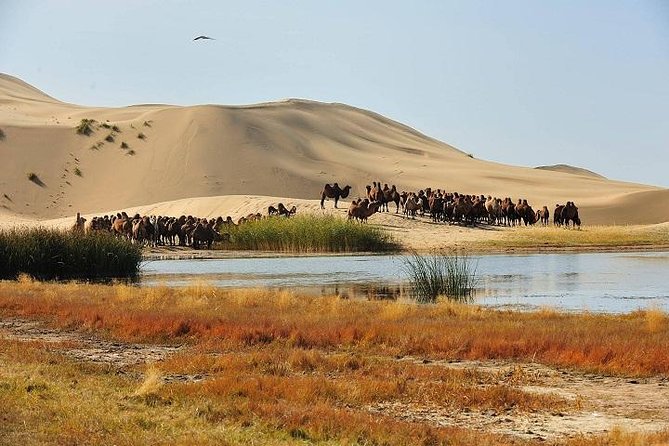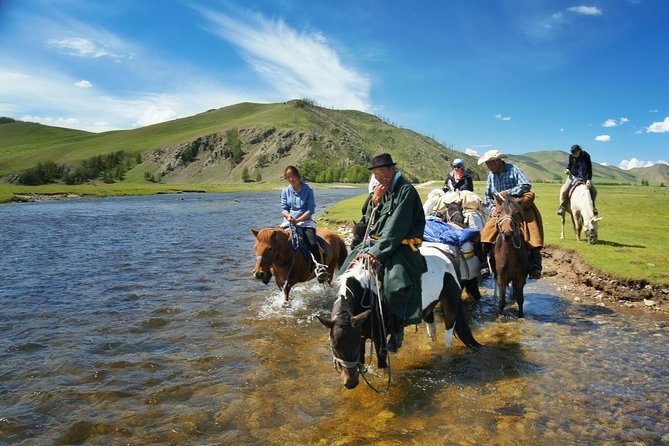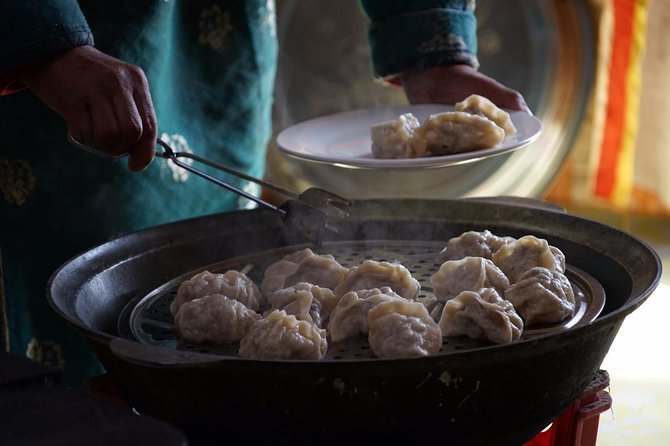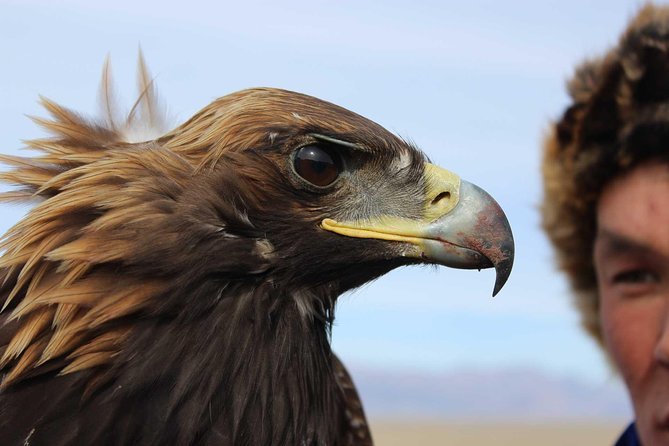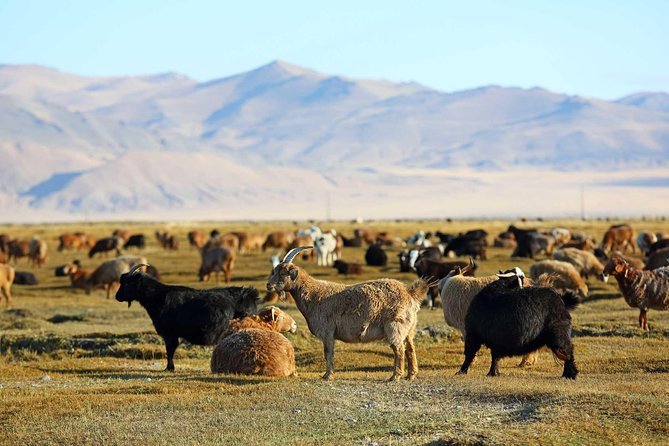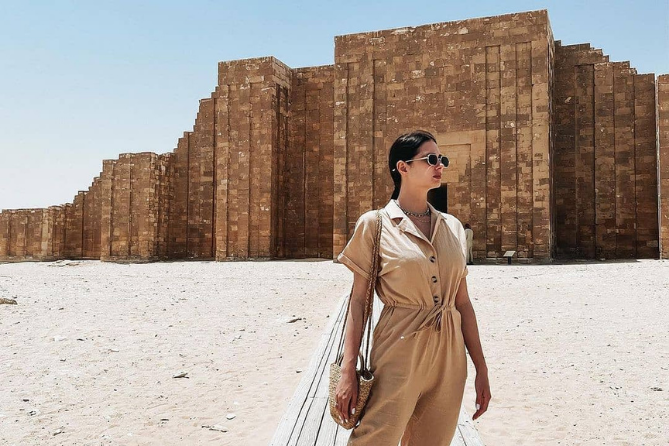Mongolia. Gobi Desert, lost monasteries, yurts and shamans - 12 days
1777$
Duration: 12 days
Tour days: 8.08.2021 — 19.08.2021
Order now, pay later!
- Free cancelation
- No prepayment required
- Book in just 1 minute
Description
Day 1-2. Capital city Ulaanbaatar. National Museum of History. Gandan Monastery. Winter Palace. Music and dance show.
Fly to the capital city of Ulaanbaatar, where we will start our author's tour in Mongolia. We check into a hotel in the center. The next morning we go for a walk around the main square and head to the National Museum of History. Here we will learn the most important things about the country - from the ancient people who left unique rock paintings more than 20 thousand years ago, to the empire of Genghis Khan and the conquest of the country by China and then by the Soviet Union.
We move from theory to practice and go to see Gandan Monastery. In Soviet times it was the only open monastery in the country. Here it is like being in Tibet - the same architecture, bright colors and monks in maroon robes. Yes, the majority of Mongolians practice Tibetan Buddhism. Pilgrims from all over Mongolia come to the main hall of the monastery, where there is a 26-meter high statue of the bodhisattva Avalokiteshvara.
We travel to the Winter Palace of the country's spiritual leader, Bogdo-gegen, and then visit a sacred place for shamanic offerings. Ancient shamanism is alive and well in Mongolia! We will also climb to the roof of a skyscraper to see the city from above, and in the evening watch a traditional Mongolian music and dance concert. If you have never heard throat singing before, you are in for a very special experience!
Day 3. "White stupa". Tsagan survaga. First night in a yurt. Herds of wild horses and camels.
In the morning we leave by jeep to the Gobi desert. The adventure begins! During the day we will drive about 200 kilometers, which will take about 5-6 hours. Already from the first kilometers it becomes clear that there are no roads in this country - only directions. But what views there are! We will see the boundless steppe, which occupies the majority of the country's territory and sand dunes, wild camels, and, of course, horses, without which it is simply impossible to imagine Mongolia and Mongolians.
We stop in a small town and go to see one of the most beautiful places in the country - Tsagan Survaga Mountain. The name means "White Stupa" in Mongolian. Indeed, this incredible rock resembles a Buddhist temple. We climb to a height of more than 50 meters and a stunning view of multicolored hills opens up. The winds have been creating this beauty for millions of years!.....
Tonight we will spend the first night in an authentic Mongolian yurt with a local family. We will be fully immersed in nomadic life, a traditional dinner and Mongolian tea. It is prepared from water, milk, green tea leaves and salt. Those who wish can also try Mongolian milk vodka archi.
Day 4. Yolin-Am Gorge. Monastery on the mountain. Collection of dinosaur eggs and bones.
In the morning we leave for the icy gorge of Yolin-Am (about 4-5 hours on the road). This gorge is quite unexpectedly located in the middle of the desert. The mountain slopes create such a shadow here that the blocks of snow and ice are several meters thick and melt only in September, when the next winter is upon us. Locals say that snow leopards used to be often seen in these places. This animal is now an endangered species, but we are sure to see other wild animals and birds here.
We climb up the slope to enter one of the oldest monasteries in the country. Several dozen monks now live here. Watch Buddhist ceremonies, enjoy views of the forests in the valley below, and sample water from the local spring, which is considered medicinal. We head to the local museum to see a collection of dinosaur eggs and bones, as well as stuffed birds and a snow leopard.
Day 5. Khongor Els sand dunes. Dinosaur cemetery.
We continue our group tour in Mongolia and in the morning we leave for Khongor Els sand dunes. On the way we visit a tract known as one of the dinosaur cemeteries. In the early twentieth century an American expedition found the first skeletons of Mongolian dinosaurs here. This is the only place where eggs of Mesozoic turtles, crocodiles and dinosaurs can be found.
We reach the dunes. We have reached the southernmost point of the Gobi Desert, where there is no vegetation. Everywhere you look there is only endless sand around us, and the wind blows tiny golden grains of sand, constantly changing the patterns on the dunes. The height of these sandy mountains reaches 300 meters! It feels as if we are in Egypt.....
Day 6-7. Ongiin-Hiid Monastery. Huzhirt village.
In the morning we leave in the direction of Ongiin Khiid Monastery (about 5 hours on the road), where we will continue our group tour to Mongolia. We will drive through the most remote parts of the Gobi Desert, suddenly stumbling upon tiny Buddhist monasteries along the way. Ongiin Khiid is located on the bank of a river. When the monastery was completed in 1810, it consisted of 28 temples and housed more than a thousand monks. Here, for example, the famous Mongolian poet Ravja studied and then spent his recluse. But everything ended in 1937, when the last abbot of the monastery was arrested, the monks were killed, and the buildings were destroyed. Now only one temple of the monastery has been restored, and there are ruins all around....
We will spend the night in the monastery, and in the morning we will leave for Huzhirt village (about 4-6 hours on the way). On the way we will admire river valleys and mineral springs. In the village we will spend the night at the local people's house.
Day 8. Horseback riding. Tsutgalan waterfall.
It's hard to imagine traveling in Mongolia without a horseback ride! In the morning we ride horses to the Tsutgalan waterfall (about 3 hours). We ride along the rocky road along the Orkhon River bed, looking at boulders of different shapes and sizes. Thousands of years ago volcanoes erupted in these places and hot lava covered the river valley with boulders for more than 100 kilometers.
After several thousand years, an earthquake occurred in the valley, which formed a cliff and now the water falls from a height of 25 meters in a powerful stream, forming a waterfall. The locals call this waterfall red because of the yellow-brown color of the water. Beautiful place! We have a rest on the river bank under small trees, listen to the sound of water and then go back to the village.
Day 9-10. Karakorum - the capital of the Mongolian empire. Erdeni Dzu Monastery.
We leave for Karakorum (approximately 3 hours on the road). This city was founded by Genghis Khan in the 13th century. From here, the Mongols led their grand empire, which stretched from what is now Korea to Poland, and from Turkey to northern India and southern China. The great khan's successor, Ugedei, favored the idea of a stationary capital and built his palace in Karakorum. Not much has been preserved in the city from those times, the findings of archaeologists are exhibited in the Open Air Museum, which we will definitely visit.
But the most interesting thing in Karakorum is the Erdeni Dzu Monastery. The ruler of the country ordered to build it in 1585, after meeting with the third Dalai Lama Sonam Gyatso and proclaiming Tibetan Buddhism as the state religion of Mongolia. The monastery was built on the model of Tibetan temples, there are reports that in the 18th century there were more than 10 thousand monks living here. Interestingly, at that time in Mongolia every third man was a Buddhist monk! The central place is occupied by three temples - "Three Treasures", symbolizing the three stages of Buddha's life. And inside the main statue of Buddha there is a sharira - a part of relics of Shakyamuni Buddha brought from Tibet.
The next day we return to Ulaanbaatar (drive about 5-6 hours). The next day is free - you can rest, walk around the city, buy souvenirs.
Day 11-12. Gorkhi-Terelj National Park. Melkhiy-Khal rock. Buddhist temple Aryaabal. Dinosaur sculpture park.
In the morning we leave for Gorkhi-Terelj National Park (about 2 hours on the road). It is believed that Genghis Khan was born in these places. And the world fame of this park was brought by unusually shaped rocks, which resemble different figures. For example, there is a sleeping dinosaur, a man with a book, and a huge turtle Melkhiy-hal - the most famous rock of the park, which has become its symbol.
We will also see the glacial lake Hagin-Khar, climb 108 stairs to the Buddhist temple Aryaabal, and walk across the wooden bridge over the Tuul River. We will also walk between the dinosaur sculptures, which were created here with the help of paleontologists.
The next day we have breakfast at the hotel, go to the airport and fly home. Our author's tour to Mongolia has come to an end. Thank you for traveling with us!
Is this journey a good fit for you?
The route is of medium level of physical exertion, suitable for people in normal physical shape. We will do a lot of walking. The route includes jeep rides lasting from 3 to 5-6 hours, as well as one horseback ride lasting about 3 hours. In Ulaanbaatar we will stay in a 3* hotel. Other nights we will spend in very simple conditions in yurts of local people, as well as one night in a remote monastery. In the yurts and monasteries all facilities (shower and toilet) are outside.
Visas:
Participants on this trip do not need a visa to Mongolia.
Included:
- All movements along the route
- Accommodation in hotels and yurts along the route
- Entrance tickets to all palaces, parks and attractions along the route
- Two meals a day throughout the trip
- Accompanying you throughout your journey.
Not included:
- Flight to Ulaanbaatar and back home. (We will help you find the best tickets)
- Insurance (mandatory)
- Meals ($10-15 per person per day).
Take with you:
- Passport
- Headdress
- Money for souvenirs
- Personal care products
- Comfortable shoes




